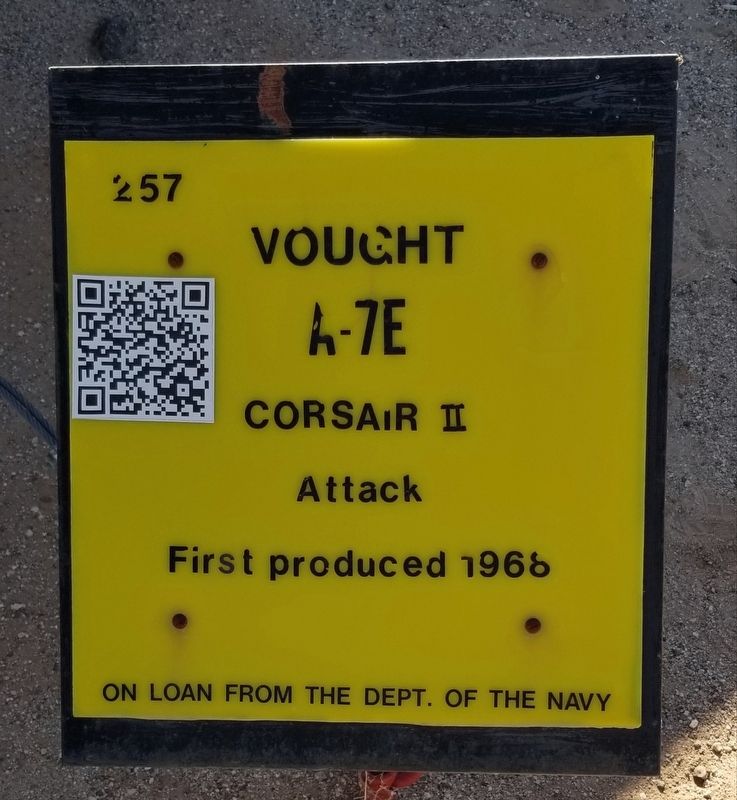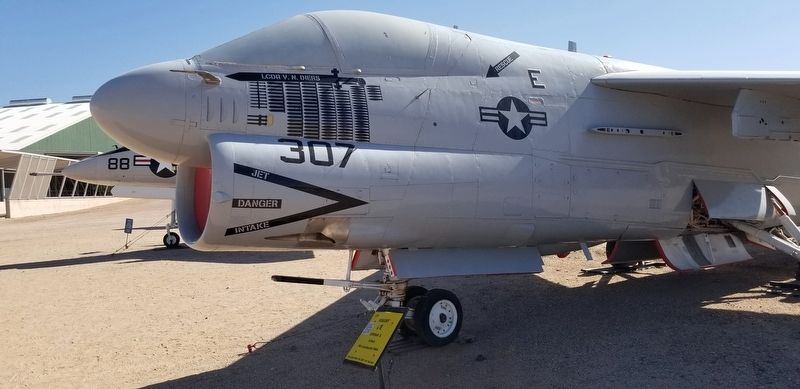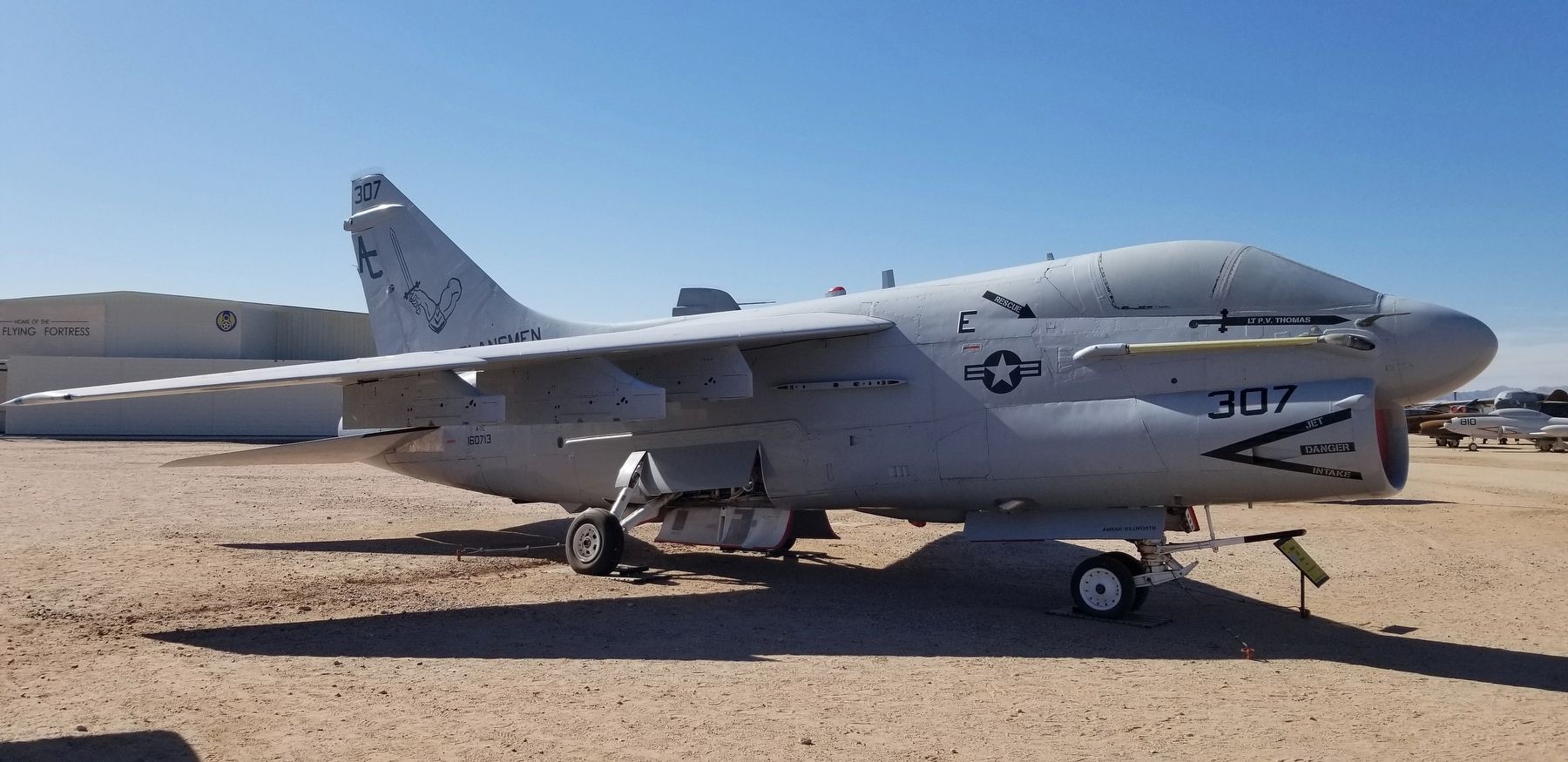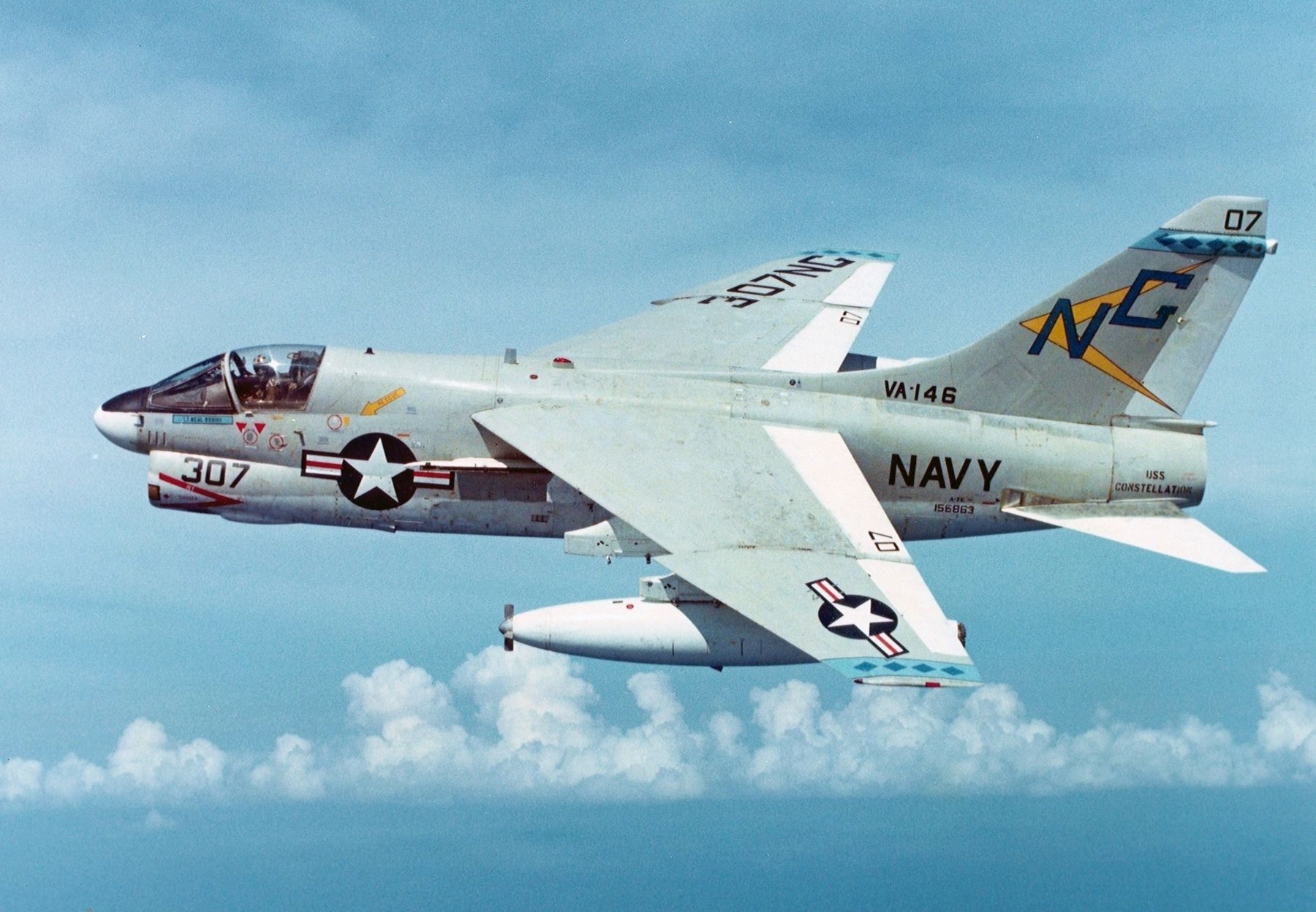Thomas Jay Park in Tucson in Pima County, Arizona — The American Mountains (Southwest)
Vought A-7E Corsair II
A-7E
Corsair II
Attack
First Produced 1968
On Loan From the Dept. Of the Navy
Erected by Pima Air & Space Museum.
Topics. This historical marker is listed in this topic list: Air & Space. A significant historical year for this entry is 1968.
Location. 32° 8.38′ N, 110° 52.018′ W. Marker is in Tucson, Arizona, in Pima County. It is in Thomas Jay Park. Marker can be reached from East Valencia Road, 0.3 miles west of South Wilmot Road. The marker is located in the northeastern section of the Pima Air & Space Museum. Touch for map. Marker is at or near this postal address: 6000 East Valencia Road, Tucson AZ 85756, United States of America. Touch for directions.
Other nearby markers. At least 8 other markers are within walking distance of this marker. Northrop F-5B (here, next to this marker); Lockheed F-104D (a few steps from this marker); Douglas A4D Skyhawk (a few steps from this marker); Grumman A-6E Intruder (a few steps from this marker); McDonnell RF-101C Voodoo (a few steps from this marker); McDonnell Douglas (Boeing) F/A-18A Hornet (a few steps from this marker); British Aerospace AV-8C (within shouting distance of this marker); Hawker Siddeley FGA.1 Kestrel (within shouting distance of this marker). Touch for a list and map of all markers in Tucson.
More about this marker. The marker is located on the outside section of the Pima Air & Space Museum. There is an entry fee required to visit both the inside and outside sections of the museum.
Also see . . . LTV A-7 Corsair II.
The A-7 was developed during the early 1960s as replacement for the Douglas A-4 Skyhawk. Its design was derived from the Vought F-8 Crusader; in comparison with the F-8, the A-7 is both smaller and restricted to subsonic speeds, its airframe being simpler and cheaper to produce. Following a competitive bid by Vought in response to the United States Navy's (USN) VAL (Heavier-than-air, Attack, Light) requirement, an initial contract for the type was issued on 8 February 1964. Development was rapid, first flying on 26 September 1965 and entering squadron service with the USN on 1 February 1967; by the end of that year, A-7s were being deployed overseas for the Vietnam War. Source: Wikipedia(Submitted on January 8, 2022, by James Hulse of Medina, Texas.)
Credits. This page was last revised on January 8, 2022. It was originally submitted on January 8, 2022, by James Hulse of Medina, Texas. This page has been viewed 109 times since then and 6 times this year. Photos: 1, 2, 3, 4. submitted on January 8, 2022, by James Hulse of Medina, Texas.



